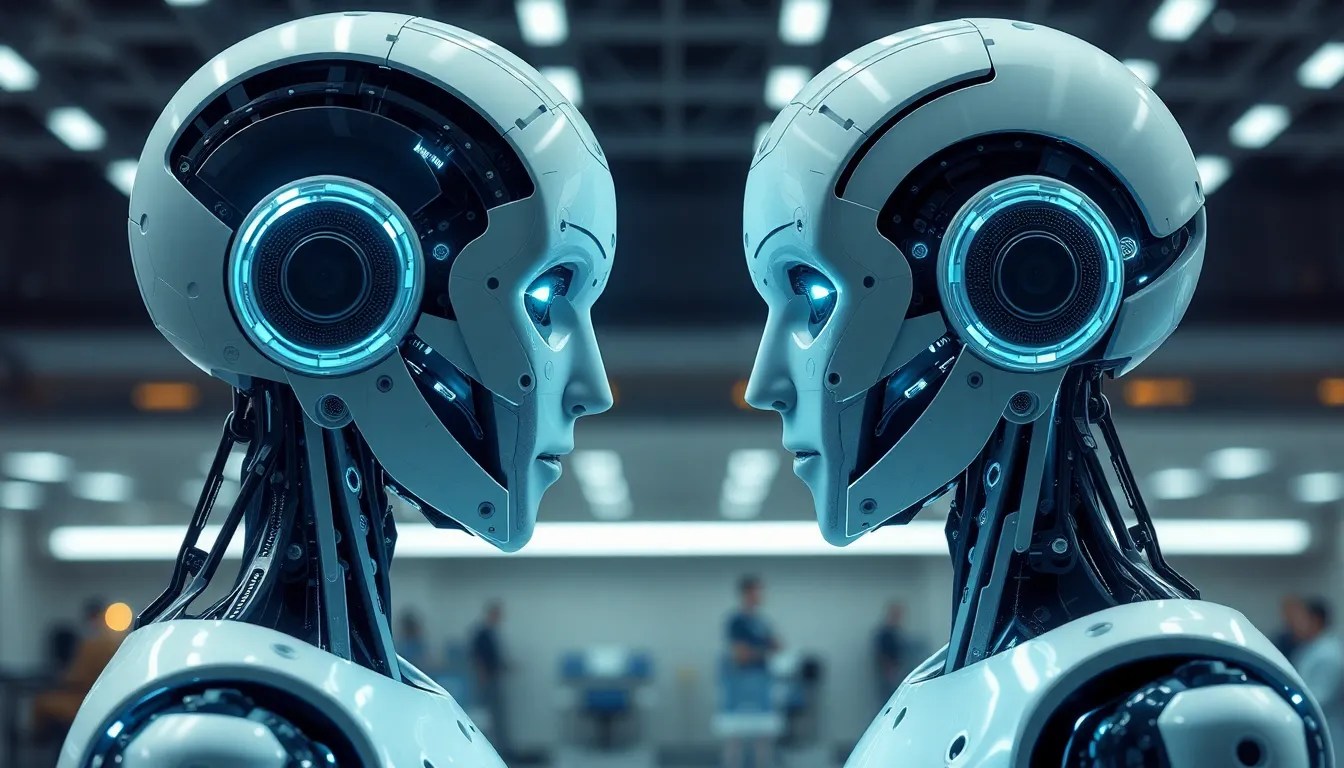Humanoid Robots vs. Humans: Who Performs Better in Complex Tasks?
I. Introduction
Humanoid robots are machines designed to replicate human form and behavior, equipped with capabilities that allow them to perform various tasks traditionally done by humans. These robots are increasingly being utilized across multiple fields, including healthcare, manufacturing, and service industries, where they are tasked with complex jobs that require a degree of cognition, dexterity, and adaptability.
Comparing the performance of humanoid robots and humans in executing complex tasks is crucial for understanding the future of work and the role of technology in our daily lives. This comparison sheds light on the strengths and limitations of each, helping to shape the integration of robotics in various sectors.
II. The Evolution of Humanoid Robots
The journey of humanoid robots began in the early 20th century but has accelerated dramatically with advancements in robotics technology. Initially limited by mechanical constraints, modern humanoid robots now leverage artificial intelligence, machine learning, and enhanced dexterity to perform tasks more effectively.
Key features of contemporary humanoid robots include:
- Advanced AI algorithms that enable learning and adaptation
- High levels of dexterity, allowing for intricate movements
- Enhanced sensory perception through cameras and sensors
Notable examples of humanoid robots currently in use include Boston Dynamics’ Atlas, which showcases remarkable agility and balance, and SoftBank’s Pepper, known for its ability to interact with humans and understand emotional cues.
III. Understanding Complex Tasks
Complex tasks are defined by their requirement for cognitive processing, decision-making, and often physical manipulation of objects or environments. These tasks can vary widely across different fields and typically include activities such as:
- Medical surgeries and diagnostics in healthcare
- Assembly line work in manufacturing
- Customer service interactions in retail
Both humans and robots face unique challenges when executing these tasks. Humans may struggle with mental fatigue and emotional stress, while robots often encounter limitations in adaptability and understanding context.
IV. Performance Metrics: How to Measure Effectiveness
To evaluate the effectiveness of humanoid robots and humans in complex tasks, several performance metrics are utilized, including:
- Speed: The time taken to complete a task.
- Accuracy: The correctness of the task execution.
- Adaptability: The ability to adjust to changing conditions or unexpected challenges.
Performance assessments can be both quantitative and qualitative. Quantitative assessments provide numerical data, while qualitative assessments focus on subjective experiences and outcomes. Case studies comparing task performance in controlled environments reveal insights into where humanoid robots excel and where humans maintain an advantage.
V. Strengths and Limitations of Humanoid Robots
Humanoid robots offer various advantages in executing complex tasks:
- Consistency and Precision: Robots can perform repetitive tasks without variation, ensuring high levels of accuracy.
- Capacity for Multitasking: Advanced robotics can handle multiple tasks simultaneously without fatigue.
However, they also have notable limitations:
- Lack of Emotional Intelligence and Creativity: Robots cannot replicate human emotions or creative problem-solving skills.
- Dependence on Programming and Data: Robots require precise programming and data inputs to function effectively, limiting their ability to adapt to novel situations.
VI. Strengths and Limitations of Humans
Humans possess unique strengths that often give them the upper hand in complex tasks:
- Emotional Intelligence and Interpersonal Skills: Humans can navigate social interactions and emotional contexts effectively.
- Creativity and Problem-Solving Abilities: Humans can think outside the box and come up with innovative solutions.
Nevertheless, human performance is not without limitations:
- Fatigue and Errors Under Pressure: Humans may experience physical and mental fatigue, leading to mistakes.
- Variability in Skill Levels: Human performance can vary significantly based on experience and individual capabilities.
VII. Collaborative Roles: Humans and Robots Together
The future of task execution may not be a competition between humans and robots but rather a collaboration. The concept of human-robot collaboration involves leveraging the strengths of both to enhance overall task performance.
Examples of successful partnerships include:
- Healthcare: Robots assisting surgeons during intricate procedures.
- Manufacturing: Robots handling repetitive assembly tasks while humans manage quality control.
- Service Industry: Robots providing information and assistance, allowing human employees to focus on complex customer interactions.
The potential for enhanced collaboration is vast, with continuous advancements in AI and robotics paving the way for more integrated systems that improve efficiency and effectiveness in various sectors.
VIII. Conclusion
In summary, the comparison between humanoid robots and human performance in complex tasks highlights the strengths and limitations of both. Humanoid robots excel in consistency and precision, while humans bring emotional intelligence and creativity to the table. As technology continues to advance, the future of humanoid robots in complex task environments looks promising, with opportunities for collaboration enhancing both productivity and quality of service.
Ultimately, finding the right balance between human capabilities and robotic advancements will be crucial as we navigate the evolving landscape of work and technology.



